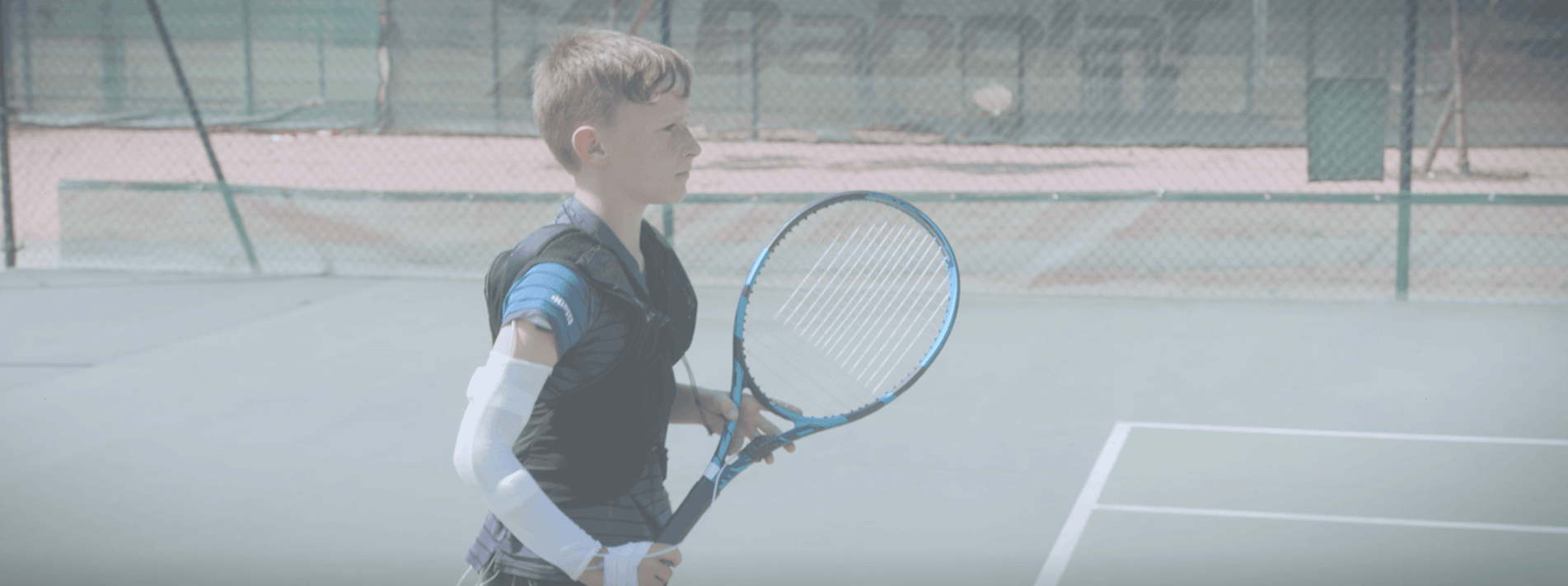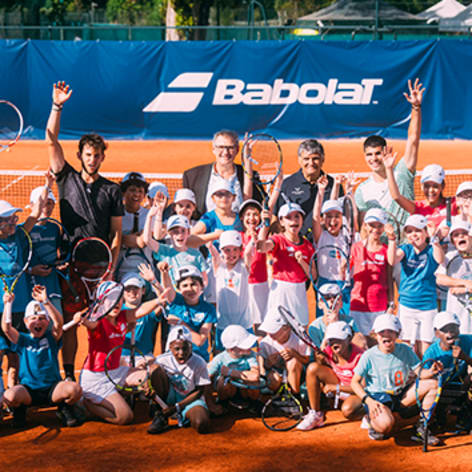In order to better understand the anthropometric and physical specificities of younger players, and to analyse the impact of certain racket design factors on their game and their bodies, Babolat engaged the services of the Inter-University Laboratory of Human Movement Biology (LIBM) and spent 18 months working with the latter on studying the needs of juniors.
Always very closely focused on players and their needs on the court, Babolat's experts are strongly aware that playing tennis involves strong activation of the muscles of the upper limbs and the transmission of shocks and vibrations to the arms that can cause overuse conditions mainly affecting the joints and tendons of the elbow and shoulder.
This highly technical and physical sport requires early training that exposes children to significant mechanical stresses from the age of between eight and ten years old. The whole idea behind the study carried out by Babolat and the Inter-University Laboratory of Human Movement Biology was therefore to gain a better understanding of the needs of juniors in order to be able to offer them rackets specially designed for players of their ages. Three hundred children from more than 15 different tennis clubs were studied.
Are young tennis players more exposed to shocks and vibrations than adults ?
In addition to this background study, a study was also carried out to measure and compare the level of muscle activation and the shocks and vibrations transmitted to the upper limb during the tennis serve in fifteen children aged eight to twelve and twenty adults.
To achieve this, triaxial accelerometers were used to record the shocks and vibrations of the racket and the hand, and eight electromyography (EMG) electrodes were glued to the dominant muscles of the arm to measure the activation of these muscles.
Comparison of muscle activation patterns between children and adults reveals that the two populations are similar in terms of intermuscular coordination. By contrast, adult players are subject to higher racket and hand vibration amplitudes, which is partly explained by higher ball speed. However, if the vibration ampltitudes are considered in proportion to their body mass or grip strength, the children were exposed to three times more vibration (+264.2% and +292.8% respectively).
This study therefore shows that the intermuscular coordination of trained young tennis players is relatively similar to that of expert adults, despite their lower levels of performance. This indicates that the motor coordination specific to the movement involved in serving is universally acquired. However, the children were subject to proportionally more shocks and vibrations, despite a lower ball speed. Furthermore, the study also shows that while children's racquets vibrate at a significantly lower frequency than those of adults, the frequency transmitted to the hand is identical across the two populations.
For the first time, therefore, it can now be demonstrated that despite playing at a lower intensity, young tennis players are exposed to significant mechanical stress, thus justifying the design and manufacture of rackets adapted to the morphological and physical characteristics of children and to their playing styles.
Key points to remember :
• Trained juniors have the same motor coordination as adults; they engage the entire chain of muscles and joints
• Juniors are exposed to three times as much vibration as adults, even though they play at a lower intensity
• Juniors produce more effort relative to their maximum strength when playing
Certain racquet design factors also have a genuine impact on the technique of juniors and their learning of the game. These include :
1. A smaller grip size, enabling better filtration of shocks/vibrations
2. A racquet that's easier to handle provides better filtration of impacts/vibrations and will facilitate learning by bringing precision to the movement performed
3. A more open stringing pattern will compensate for the junior player's lack of strength by storing/releasing elastic energy
It is with these different elements in mind that Babolat's experts have developed the B'Fly and Ballfighter ranges, which are specially designed to meet the specific needs of juniors.





